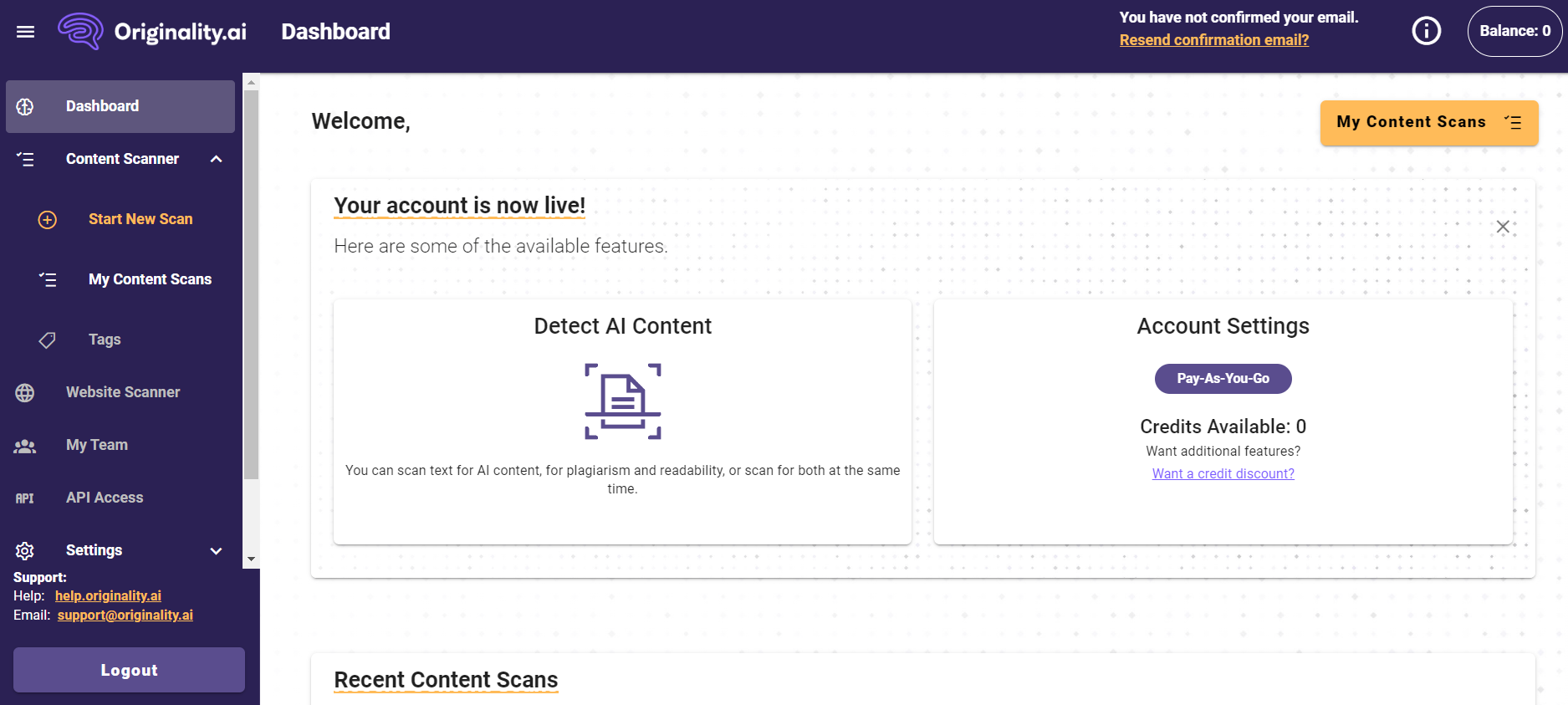Descriptive analytics is probably the most primary type of knowledge analytics. A fast Google search will present that this sort is mostly used to reply the query “what” or “what occurred?”
The function of descriptive analytics is to research present or previous knowledge to uncover tendencies or anomalies. Usually, this technique is used to trace enterprise metrics and key efficiency indicators (KPIs) to indicate progress towards objectives.
For instance, month-to-month income, variety of new clients, variety of merchandise bought, and common check rating are all forms of descriptive knowledge.
Descriptive analytics is simply that: an outline. Knowledge is analyzed at face worth. Different forms of knowledge analytics, similar to diagnostic analytics, have to be used to show primary knowledge into actionable insights.
For extra data, additionally see: Finest Knowledge Analytics Instruments
What are the three Key Kinds of Knowledge Analytics?
Whereas descriptive analytics is the foundational type of knowledge analytics, there are three different key varieties which might be utilized in many organizations right this moment: diagnostic, predictive, and prescriptive. These three varieties are sometimes used after descriptive analytics for deeper evaluation.
Diagnostic Analytics
Diagnostic analytics is usually the following step after descriptive analytics. Diagnostic analytics goals to “diagnose” the information by answering the query “why?”
For instance, a descriptive knowledge report might present that income is up for the quarter. Nevertheless, diagnostic analytics goes deeper, analyzing why income has elevated. Strategies used for diagnostic analytics vary from statistical evaluation to likelihood.
Predictive Analytics
Predictive analytics takes descriptive and diagnostic analytics a step additional by utilizing present and previous knowledge to foretell the longer term.
For instance, one of these analytics is used usually within the manufacturing trade. Machine knowledge is extracted over time and analyzed for tendencies that will predict future failure. If an anomaly is discovered, upkeep or repairs could be performed earlier than unplanned downtime happens.
One other use case for predictive analytics is threat modeling. For instance, companies can use knowledge to grasp numerous monetary dangers and mitigate them earlier than they negatively affect operations.
Prescriptive Analytics
Prescriptive analytics makes use of superior processes similar to machine studying, synthetic intelligence (AI), and clever algorithms to “prescribe” or suggest an motion plan primarily based on knowledge. In some instances, this course of entails performing particular actions primarily based on outcomes.
For instance, let’s think about our manufacturing use case from above. A producer might uncover a future machine failure through the predictive analytics course of. Nevertheless, extra clever, prescriptive analytics might uncover that failure is imminent and a shutdown ought to happen to stop additional injury.
Prescriptive analytics is slowly turning into mainstream as tech similar to AI continues to evolve. Current numbers present that the scale of the prescriptive analytics market is predicted to achieve $12.35 billion by 2026.
To study extra, additionally see: Prime Enterprise Intelligence Software program
How Is Descriptive Analytics Processed?
Uncooked knowledge is never able to yield insights. For instance, knowledge could also be unstructured, which means it doesn’t comply with a selected knowledge mannequin, making it tough to research. Plus, knowledge could be unfold throughout a large number of disparate sources, from a corporation’s CRM to public databases.
That is the place the descriptive analytics course of begins. First, knowledge have to be wrangled from all of its sources right into a single location, similar to an information warehouse. This step is accomplished via processes similar to ETL (extract, remodel, load) or knowledge virtualization.
As soon as the information is wrangled, it may possibly then be cleansed and arranged. For instance, knowledge cleansing entails eradicating duplicate or incomplete knowledge from a dataset. The cleansing step ensures the information is reliable, which is crucial when utilizing it to make selections.
After the information is cleansed, the evaluation step can start. Previously, knowledge could be loaded into spreadsheets after which analyzed for patterns. However now, there are numerous instruments and software program platforms that eradicate the necessity for tedious spreadsheets.
Extra on this subject: Prime Knowledge Virtualization Instruments
4 Actual-World Examples of Descriptive Analytics
Descriptive analytics is the most typical type of knowledge analytics. It’s used throughout industries, niches, and markets, for all the things from figuring out annual budgets to figuring out client tendencies.
Reporting on funds
Descriptive analytics can be utilized to observe the monetary well-being of any group. For instance, companies can pull knowledge on all the things from month-to-month income to the variety of merchandise bought in any given week.
This descriptive knowledge can then assist stakeholders type insights and make selections on future product improvement, gross sales objectives, asset purchases, and a lot extra.
Monitoring advertising marketing campaign success
Many organizations use descriptive analytics to verify the efficiency of their advertising campaigns. For instance, descriptive knowledge can ship insights on conversions, new leads, new clients, and advertising spend.
Descriptive analytics also can assist you to bridge the hole between conventional advertising initiatives and digital advertising. For instance, knowledge can pinpoint tendencies involving social media impressions, web site bounce charge, and even clicks on enterprise Fb advertisements.
This knowledge is then used to tell future advertising campaigns, which have a direct affect on the success of a enterprise.
Monitoring general enterprise efficiency
Descriptive knowledge can go even additional than monitoring funds or advertising campaigns. Knowledge may help you perceive the general efficiency of what you are promoting by uncovering insights similar to development charge, churn charge, and even worker engagement.
This knowledge arms stakeholders with the proof they should make sound enterprise selections to maintain their organizations shifting ahead. It additionally helps pinpoint potential enterprise dangers that have to be mitigated.
Figuring out tendencies
Maybe the most typical use of descriptive knowledge that crosses all industries is just figuring out tendencies.
For instance, in manufacturing, machine knowledge could be analyzed to pinpoint ongoing mechanical points that, if not resolved, may lead to critical downtime. And in healthcare, descriptive knowledge can be utilized to trace affected person well being and enhance care outcomes.
Descriptive Analytics Instruments
There are lots of instruments you should utilize for descriptive analytics. For instance, many platforms work to gather knowledge after which ship insights utilizing interactive dashboards. As an alternative of making an attempt to glean insights from a spreadsheet, these platforms use intuitive graphs and charts that can assist you visualize knowledge at a look.
Some examples of in style descriptive analytics instruments embody:
- SAP Analytics Cloud
- SAS
- Tableau
- Apache Spark
- Sisense
The Descriptive Analytics Market
In keeping with current knowledge, 97% of organizations are investing in knowledge initiatives. And the massive knowledge market is predicted to achieve $473.6 billion by 2030. In different phrases, knowledge is king, and group can’t transfer ahead with out it.
Sadly, many organizations are struggling to place knowledge to good use. One other survey discovered that solely 26.5% of corporations have efficiently created a data-driven group.
Whereas there are numerous elements at play right here, similar to a scarcity of information expertise, a few of the rising pains revolve across the complexity of information analytics. In any case, there are such a lot of completely different parts, from knowledge varieties to analytics fashions.
Nevertheless, by taking analytics again to the fundamentals, we will see it for what it was initially supposed to be: a instrument for answering the straightforward query of “what.” This query could be answered via the foundational knowledge analytics sort: descriptive analytics.
For extra data, additionally see: Knowledge Analytics Tendencies











